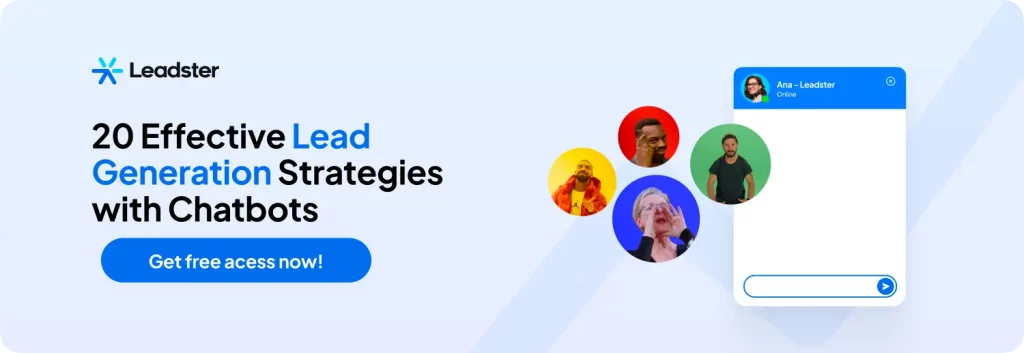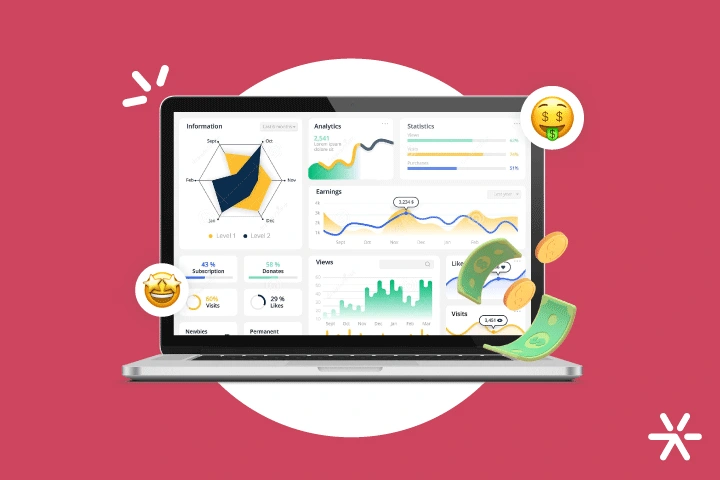How to Create a Customer Quote and Close Deals
How can you offer a product to your customer without even understanding their needs and negotiating the best deal for both parties? The solution to this problem is to create a good quote for the customer.
Through the quote, you can present what your company has to offer in response to the challenges they face, as well as how much it will cost.
If you want to learn how to create a good quote for your customer and, consequently, close more sales, keep reading this article!
What is a Customer Quote?

A quote for the customer is simply a document that details the costs of a service or product.
In other words, it is a proposal responding to the customer’s request, presenting the best possible quote for the requested service or product.
The quote is also used to formalize the hiring of services or issuing an invoice.
What’s the Difference Between Price Quotation, Quote, and Commercial Proposal?
To make it easier to understand, let’s look at a hypothetical example:
Imagine your marketing department has a set budget for the first semester. One way to use that budget is to hire a lead generation software.
From this point, the marketing team will request quotes from various providers, and after negotiations, the provider with the best proposal (including price, conditions, service quality, etc.) will win the contract.
In short, the quote is linked to the forecast of expenses and revenues over a period—it is the internal management of a business.
A price quotation, on the other hand, is when a company submits its requests to the market, analyzing information about the price and purchasing conditions of products or services.
Finally, a commercial proposal formalizes the offer of a product or service to a customer.
However, it’s common to hear these three terms used interchangeably in day-to-day conversations—and there’s no problem with that, as long as you are speaking the same language as your customer.
How to Generate More Customer Quotes and Price Quotations for Your Business?
There are several strategies to generate more quotes, some of which include prospecting and lead generation. Here are 9 ways for you to try in your business.
Let’s go!
To Generate Qualified Leads
Here are 6 tools to help you generate qualified leads, i.e., potential customers with characteristics that are even more relevant to your company’s profile, who will often be requesting quotes.
- Active Prospecting Tools (B2B) – software that involves researching, identifying, and building relationships with consumers who match the ideal customer profile. Some options are Ramper, LinkedIn Sales Navigator, and Speedio.
- Chatbots – this tool operates through predefined articles and scripts, generating automated conversations with one of the objectives being lead generation. Some of the best chatbots on the market are Leadster, Intercom, and Landbot.
- WhatsApp Button – this tool directs visitors from your website’s pages to a direct contact channel, WhatsApp. You can also use Leadster to add the WhatsApp Button!
- Landing Page Builders – LPs are great tools for launching campaigns and capturing leads. Some of the best landing page tools are Carrd, IM Creator, and Wix.
- Pop-Up Creators – pop-ups are windows that overlay the site or page being visited, using concise language and a strong CTA. The best tools are OptinMonster, ConvertFlow, and Popt.in.
- Ad Platforms – lastly, ad platforms will help promote and reach the most qualified contacts for your business, while also enabling personalized approaches. Consider investing in Facebook Ads, Google Ads, and LinkedIn Ads.
To Nurture and Secure Quote Requests
Now that you’ve generated your qualified leads, it’s time to nurture them—not all leads will immediately request a quote.
To do this, use the following tools:
- Email Marketing – this tool focuses on creating, editing, and sending email marketing campaigns. They typically offer templates and pre-built layouts to make the work easier. Some of the best email marketing tools are MailChimp, RD Station, and SendPulse.
- Cold Calling – the cold calling strategy involves calling multiple contacts to see if any of them convert to a sale.
- WhatsApp Marketing – as the name suggests, this strategy uses WhatsApp as a marketing channel to sell your products, services, and solutions. It can also be used to nurture relationships with leads after conversion, helping to generate interest in your product or service over time and ultimately leading to a quote request.
How to Create a Customer Quote?
Now that you know some strategies for receiving more quote requests, let’s go over the steps to continue this process and organize it internally in your company.
Have a Price List to Speed Up the Process
At some point, your company will need to define a price list, so be prepared for that stage.
Also, remember to date your price lists so the customer can assess the current situation, and clarify what is being charged in that quote.
If you’re a marketing agency or freelancer and have never gone through this stage before, know that Leadster has an article ready to guide you in creating your Digital Marketing Price List.
If You Can’t Offer a Fixed Price, Provide an Estimate
If you don’t have a fixed price, provide an estimate.
This may happen in cases where the production of the service or product depends on skills, time, and materials that are variable.
An estimate is a guess of how much the work might cost, considering potential unforeseen developments and circumstances.
Provide minimum and maximum values for the customer’s quote.
Offer Options to the Customer
Many times, the customer may not have requested a specific item. Therefore, include in your quote services or products related to the customer’s pain points and needs, even if they didn’t request it.

Include All Essential Information
Essential information includes dates, prices, standard company data, and other details critical to your quote.
Stay with this article, as we will detail each of them below.
Use a Standardized Quote Template for Customers
To avoid surprises, use a standardized quote template for your customers.
Test different approaches and stick with the one that brings the best results for your business.
In the article on the commercial proposal, we have four templates that you can adapt for your customer quotes.
We also have personalized templates for those working with digital marketing, so check them out!
Keep an Open Channel for Questions and Negotiating the Terms of the Proposal
Don’t just send the quote and disappear. Maintain clear and accessible communication with the customer.
This will make the negotiation process flow better, and your company will earn points for customer experience.
What Shouldn’t Be Missing in a Customer Price Quotation?
Now that you know how to create a quote or price quotation for the customer, let’s review the key points that must be included.
- Standard commercial information – company name, address, customer details, identification number, and quote number.
- Details of the service or product to be delivered – description of the problem, the procedures to be carried out, and the execution schedule.
- Execution schedule or delivery deadline – expiration date or delivery dates for products and services.
- Prices – total per product/service and the overall total for all included services and products.
- Payment conditions – installments, down payments, shipping costs, payment via bank slip, credit card, etc.
- Terms and conditions – as this is a more legal section, it’s best to consult a lawyer to outline this area.
- Quote validity – the validity of the quote, the proposal, and the service (if necessary).
- Space for signatures – you can also provide digital signatures and instantly receive the acceptance of the quote.
- Contact details – corporate email, phone number, website, and all other available forms of contact.
How to Write a Quote Email?

To start, a good quote email for the customer needs to have clear language, be objective, include accurate data, and end with a follow-up scheduling.
Now that you know the essential points, let’s go over the steps:
- Write an introduction that highlights your business – emphasize the benefits of your products and services, and to reinforce this, highlight the customer’s pain points.
- Describe the products and services clearly and objectively – create a complete and transparent description of your products and services.
- Include a readable price table – list the price of each product or service, identify each item, and provide a brief description.
- Set an expiration date for the quote – don’t forget this point, or everything could get off track. Therefore, make the expiration date of the quote clear and visible.
- Schedule a follow-up – lastly, agree with the customer on the next steps to continue the conversation, whether through a video call, phone call, visit, or a new email.
How to Approach the Customer to Close a Quote?
In four steps, you’ll learn how to approach the customer to close your quote.
Check it out:
1. Identify if the lead is truly hot and if they are the decision-maker (or just researching/influencer)
Here are the definitions to understand this step:
- Hot leads – qualified leads that stand out from the general pool due to their high interest in your solution and readiness for a sales representative’s approach.
- Decision-makers – professionals responsible for the final say on a purchase or contract.
Identify if the person you’re speaking to fits one of these definitions to proceed with the deal, as sometimes the individual is only researching and not in a position to make a decision.
2. Follow up
The sales follow-up is simply keeping track of a contact.
This step will keep the offer, in this case, the quote, active, preventing the negotiation from cooling down.
Additionally, it helps strengthen the relationship, show availability, clear up doubts, and encourage closing the sale or contract.
3. Overcome objections to move forward with the negotiation
A sales objection is a concern, question, or barrier raised by the customer regarding the proposal being offered.
To better understand this situation, it’s essential to create your sales objection matrix, so the team is prepared for these moments.
To overcome these objections, I recommend Leadster’s 14 Main Sales Negotiation Techniques!
4. Close the sale using established (or new) techniques
There are various sales closing techniques in the market.
To choose which one to use, always focus on your business’s tone of voice and consider both the company’s and the customer’s personality: analyze which strategy is most suitable for engaging with your lead and closing the sale.
Generate More Quotes and Boost Your Sales with Leadster
To further enhance your quote process for customers, count on Leadster.
Through our Conversational Marketing Chatbot, you can qualify the lead, gather all the necessary information for creating the quote, and even send these qualified leads directly to WhatsApp or schedule a meeting.
If you’re still not convinced, know that we have a success story of increased quote generation after a company started using Leadster.
Try our platform now with a 14-day free trial and generate more quotes for your business!







